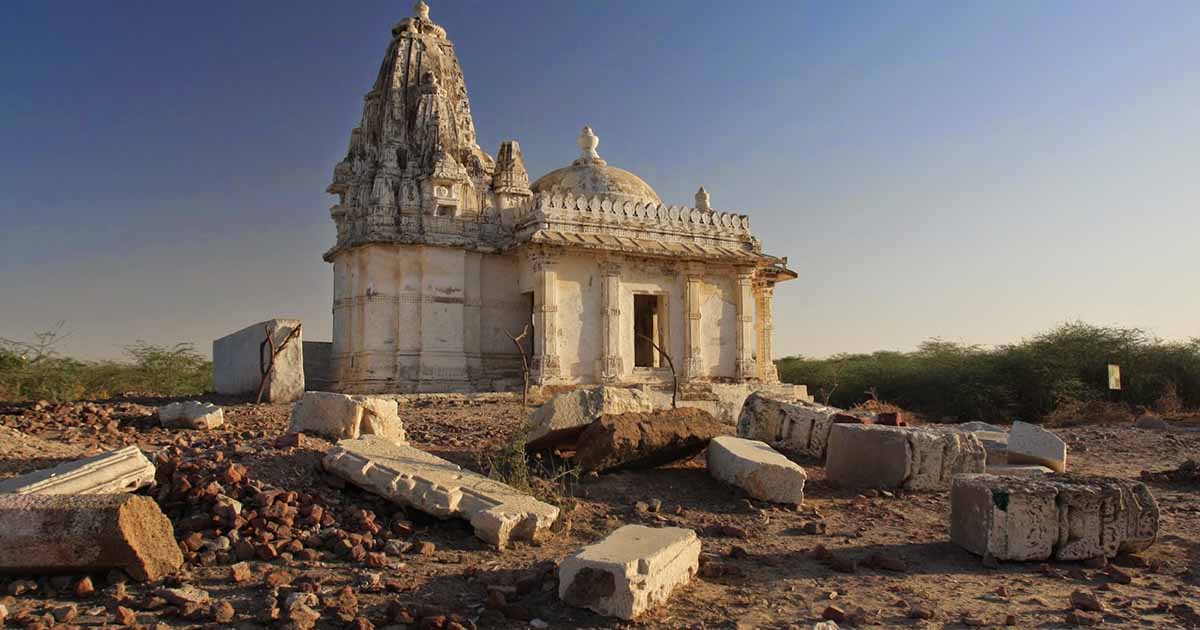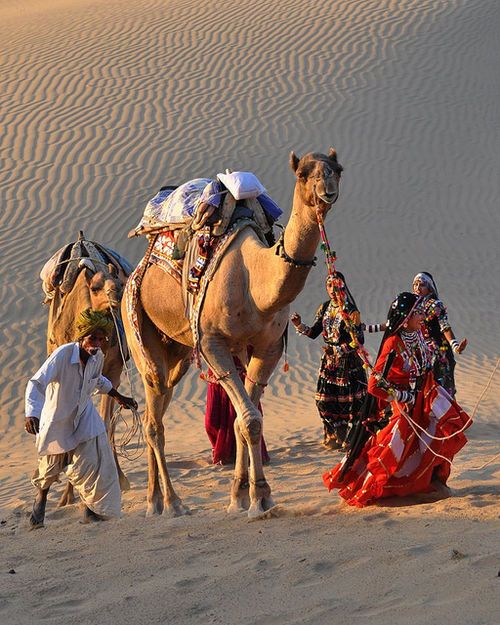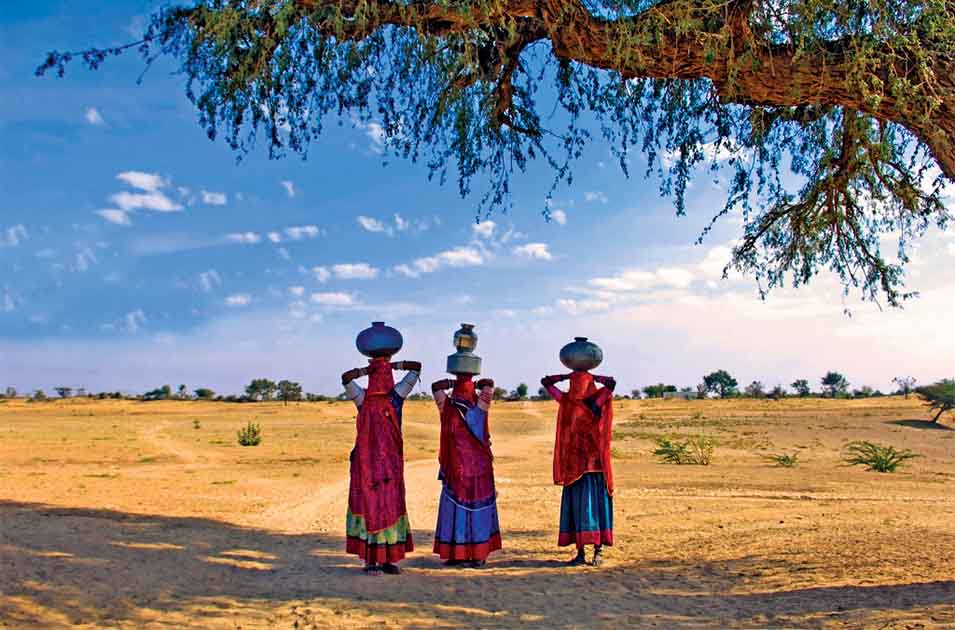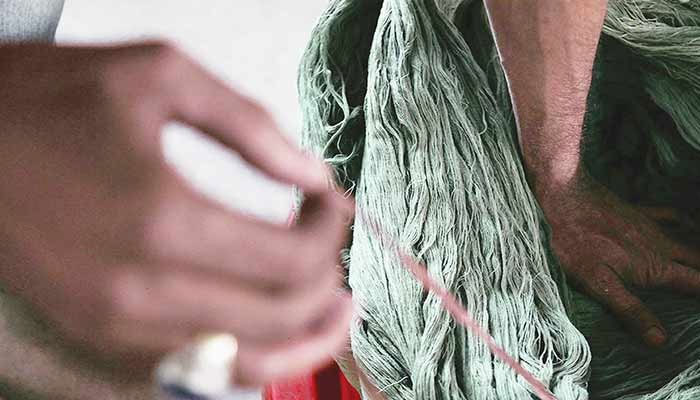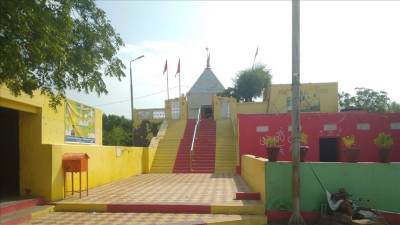Thar Desert boasts rich architecture
https://nation.com.pk/NewsSource/haber
Anadolu
6:06 PM | September 13, 2021
Pakistan's Thar Desert, otherwise famous for its frequent famine spells and treacherous weather, boasts a spectacular architectural treasure which authorities are finally trying to preserve.
Surrounded by crowded streets, in the midst of Umerkot city in the Sindh province, stands a vast fort described as a transitional point of the Mughal dynasty that ruled India for over three centuries.
Vendors repeatedly make loud chants about their wares to attract buyers at a bustling bazaar just a few meters away from the fort entrance.
Scores of auto-rickshaws are also parked in a long line near the outer wall of the fort, turning it into a permanent and illegal transport terminal.
Located some 60 kilometers (37 miles) from the Indian border, the 11th-century citadel is the birthplace of Akbar, the third emperor of the Mughal dynasty, who was born in 1542, when his father was on the run after being defeated by Afghan King Sher Shah Suri.
On his way to Iran, Humayun was given refuge by the Hindu Rajput ruler of Umerkot, Rana Parshad Sodha, until the defeated emperor regained his strength and raised an army to snatch his kingdom from Suri’s successors just four years after Akbar's birth.
According to another account, Akbar was born in the middle of a jungle located five kilometers (around three miles) from the fort, where a monument has been constructed.
Once crumbling due to the ravages of time and years of neglect, Umerkot Qila (fort) -- as it is locally known -- is currently in a relatively presentable state following its restoration by the heritage authorities that began in 2016.
A newly repaired wide staircase made of burnt red bricks leads to a high platform overlooking the Umerkot city.
The platform is dotted with seven discarded brass canons in a circle with a green and white Pakistani flag fluttering in the middle.
The site was also used for executions by the British army following the capture of Sindh in 1843.
The fortification wall, as high as 45 feet, is made of burnt bricks.
The fort houses a jail, guest house, and museum.
Surrounded by heaps of broken bricks, the jail and guest house, constructed during the British colonial era, are currently in ruins.
But the museum is well-maintained and has long been the central attraction for visitors.
It contains ancient manuscripts, coins, paintings, specimens of calligraphy, royal documents, jewelry, Mughal-era arms, and Jain and Hindu sculptures that shed light on different periods of history.
“No doubt, there has been some improvement in the otherwise crumbling condition of this historic fort during the past few years," said Noor Ahmed Janjhi, who often writes on the history and architecture.
He noted that much more is needed, however, to restore the fort to its original state, including the removal of illegal settlements.
A part of the museum has been dedicated to depicting the popular Sindhi folktale Umar Marvi about Marvi Maraich, a girl from Thar who resists the overtures of the powerful Soomro King Umar and the temptation to live in his palace as a queen, preferring to be in a simple rural environment with her own village folk.
Inside a large room, life-size statues of Marvi, Umar, and his maidservant are erected.
Attired in a swanky gown and sporting a turban, Umar is shown asking Marvi for her hand as his maidservant is seen holding jewelry in a piece of cloth. The jewelry is meant for Marvi, who, however, sitting on the floor, is rejecting the king's proposal with a somber face.
Umerkot is one of two Pakistani cities where Hindus make up nearly half of the local population.
Both Hindus and Muslims have conflicting claims to Umerkot or Amarkot fort and the city itself.
According to one account, the city and the fort were constructed by Maharaja Amar Singh, who came to power in the middle of the 13th century. Some historians say the fort was built by King Umar, the founder of the Soomro dynasty, in the middle of the 11th century.
The fort was later held by different rulers until 1843, when the British army captured Sindh. After the partition of India in 1947, the fort was taken over by the Pakistani government.
No matter who built the fort, visitors recall the tale of Marvi, who was incarcerated in the fort for refusing the king's proposal.
Often referred to as "Marvi of Malir" (prosperous and green in the Thari language), Marvi was immortalized by Shah Abdul Latif Bhittai, a mystic Sufi saint and poet, in his celebrated poetic compendium Shah Jo Risalo, depicting her as a symbol of courage and patriotism.
Shah Latif also named one of the seven musical notes he invented after Marvi, commonly known as "Sur Marvi."
Marvi later returned to her home village, Bhalwa, untouched.
The Akbar monument, a modern brick-built small-domed pavilion situated on a small piece of land on the eastern outskirt of Umerkot, is erected to honor the Mughal emperor who ruled India for 49 years.
Encompassed by vegetation, which is the result of recent rains on the one side and Neem and Sidr trees on the other, the doorless pavilion is built with baked red bricks. The dome is slightly fading due to sunshine and rains.
According to a plaque outside the monument, Akbar was born at this place, which was once a part of the thick forest.
Supporting the contention, Janjhi, who has authored the book Tharparkar: Land of Colour, Contrast and Culture, said Akbar was born at this site, which at that time was part of the ancient Umerkot fort.
The existing structure of the fort, he said, is the result of an expansion by the Kalhoro dynasty in the 18th century.
A couple of stone benches have been set up under the tall Neem trees in a small lawn located next to the monument, allowing visitors to take a rest in the midday broiling sun.
Standing in the middle of a sprawling green swathe, the monument is as simple as many others. But it reminds visitors about one of the most illustrious rulers of the Mughal dynasty, also known as Akbar the Great.
"Umerkot and the Mughal dynasty had had an inseparable connection. It was Umerkot that actually saved the long-running dynasty. Otherwise, it would have been restricted to Humayun only," Janjhi said.
"It was Umerkot that had provided refuge and opportunity to Humayun to recapture his lost empire," he went on to argue, adding that Humayun had first sought refuge from the ruler of the Jodhpur state, which was rejected.


